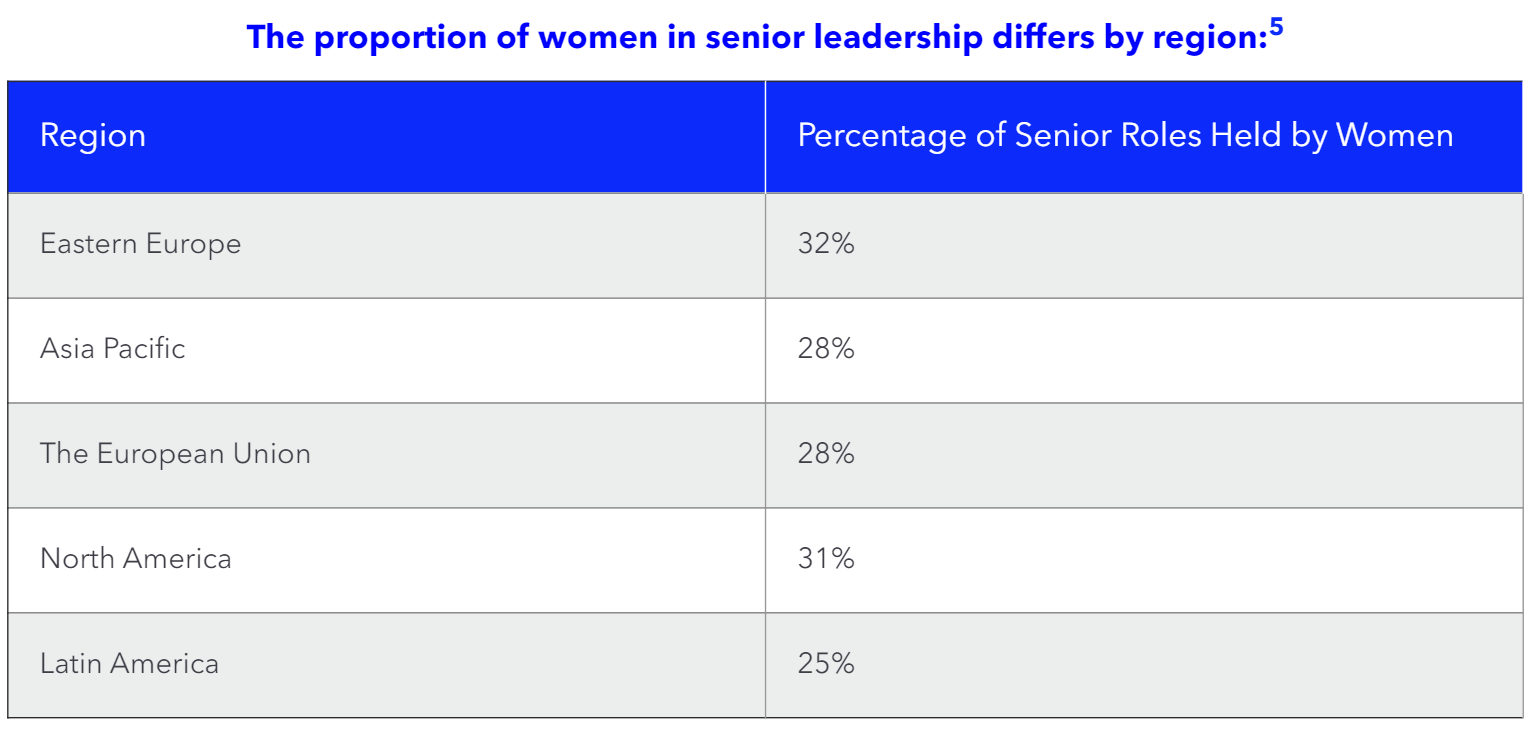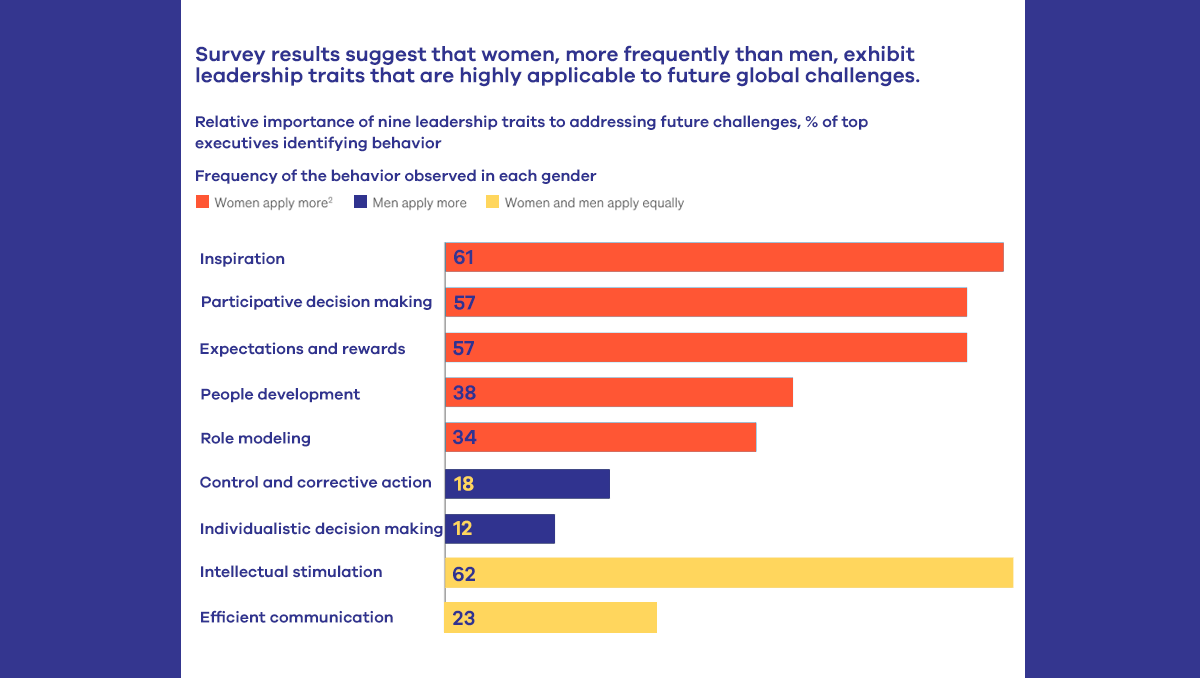The Ultimate Guide on Coaching for Women in Leadership

Every individual employee has their own background, perspective and way of being. If workplaces want to foster diverse communities that are truly inclusive — where people feel welcome, heard and fairly compensated — companies must respect and support diverse identities.
One way organisations can support diverse identities is by working with coaches who specialise in coaching specific populations. In this article, we’ll discuss coaching specifically for supporting women in organisations.
Although individual coaching goals vary from person to person, common goals for coaching women in leadership can include navigating gender bias and workplace politics, increasing confidence and resilience, and negotiating offers and promotions.
By accounting for historical factors that disproportionately affect women and recognising the role that systemic barriers and inequities like the gender pay gap play, coaching through a gender lens can foster more equitable workplaces.
So, what does coaching for women look like? How does it differ from a more general approach to coaching? And how can coaching be used to cultivate more inclusive workplaces?
The Hard Facts

Women hold only 19% of board seats and 15% of executive officer positions at Fortune 500 companies. Only 4% of these companies have female CEOs and women’s board tenures are found to be shorter. When it comes to salary, entry-level females make 20% less than their male counterparts and according to the Chartered Management Institute and XpertHR, men are 40% more likely to be promoted to senior positions.

When we look at recent research from Zenger Folkman consisting of thousands of 360-degree reviews, women excelled in the majority of areas, outscoring men on 17 of the 19 capabilities that differentiate excellent leaders from average/ poor ones. The discrepancy between data like this and the number of women in leadership positions is monumental.
What We Can Do to Address the Issues
There are many areas which contribute to a broad disparity in leadership positions, we have only highlighted a few. What we want to concentrate on is how we can proactively combat these issues. If you are in a position of leadership, start with looking at your workplace culture and ask yourself questions such as: does your executive team portray gender diversity? Are we choosing confidence over competence? Are we listening to our employees? Do we foster an inclusive workplace culture during and beyond the hiring process?
An actionable insight when it comes to hiring, is that men will apply for a job they are 60% qualified for, whereas most women only apply if they are 100% qualified. In this respect, create performance-based job descriptions with a focus on what a candidate would be responsible for accomplishing, rather than listing qualifications. When it comes to the interview process, another suggestion is to ensure that you have a diverse panel so that women feel more comfortable.
One of the most impactful actions you can take is to implement a women in leadership program. Topics that are especially relevant to women should be included such as the art of negotiation, enhancing personal influence within the organisation and matching leadership skills to leadership challenges. Women in leadership programs are incredibly impactful, not just for the women participating, but for company-wide results. According to Women in Business and Management: The business case for change, more than 57% of the 13,000 enterprises in 70 countries agreed that gender diversity initiatives such as women in leadership programs, improved business outcomes. Furthermore, almost 75% of those organisations who tracked these initiatives reported profit increases of 5-20%. Other notable outcomes include more than 54% of organisations reporting improvements in creativity, innovation in management practices, openness and reported an enhanced company reputation, with nearly 37% reporting it enabled them to more effectively gauge customer sentiment. Similar results have been found in initiatives such as McKinsey’s Remarkable Women Program.
It is clear that organisations who devote personnel time and expense in establishing women in leadership programs will see a positive ROI. Whatsmore, recent research from McKinsey suggests that women, more frequently than men, demonstrate leadership characteristics that are highly applicable to future global challenges.

What’s the Purpose of Coaching for Women?
Drawing from many definitions in the field, , CoachHub uses this definition for coaching: “Coaching involved, partnering with clients to help them reflect on themselves, their situation, and context, and identify new insights and actions to unlock potential, enhance well-being and improve performance.”
When considering coaching for women specifically, the definition stays the same, but the goals and focus may differ. Although coaching is a highly-individualised process, in general, coaching that takes into account the identities and experiences of a specific population can help account for distinct historical and cultural factors that disproportionately affect a group of people: systemic barriers, inequities and/or privileges to name a few broad categories.
When coaching women, a coach may need to address the lack of women in leadership at the organisation and discuss why that’s the case. In McKinsey & Co.’s report, researchers found that, on average, women are significantly more burned out than men due to the pandemic; women do more to support their teams and advance diversity, equity, and inclusion efforts; and women of colour remain far more likely than white women to be on the receiving end of disrespectful and “othering” behaviour, plus many other findings.
This type of research, along with a strong alliance between the coach and coachee can help inform the coaching process.
Coaching for Women
Let’s say an organisation wants to match three employees each with a perfect coach for them based on each of their needs and identities. That company may want to hire a coach who has more experience working with women in leadership, an LGBTQIA+ executive coach and a black female coach with leadership experience in the tech sector.
While any highly credentialed coach can be a great match for any coachee, at times it can be beneficial to have coaches who are more experienced in working with specific identities (e.g., women in leadership positions, people of colour, LGBTQIA+, etc.). They can often bring a different understanding of a population’s unique culture and needs to their coaching sessions. Additionally, since the coach often shares similar identities with the folks who they choose to coach, the coach may be better able to connect their coaching process to that coachees experience .
Coaches with an area of expertise can also play an important role when it comes to representation. McKinsey & Co.’s Women in the Workplace report finds that women who are “Onlys”—those who are often one of the only people of their race or gender in the room at work—have especially difficult day-to-day experiences. A coach who shares these identities may be better able to guide women, and feel additionally supported.
How is Coaching for Women Different?
When we look at the impact of coaching on women, the Association for Talent Development suggests that “Coaching has emerged as a key development strategy during the pandemic, particularly for women. [Coaching] is uniquely positioned to support women during uncertain times because it is flexible, timely, agile and personalised.”
While many outcomes of coaching for women in leadership positions are the same as general coaching outcomes — things like goal attainment and improved well-being — coaching for women can focus more on intentionally acknowledging key challenges that affect women.
For example, in a study of nearly 30,000 workers, researchers Alan Benson and Danielle Li found that women are 14% less likely to be promoted each year than men (even though women consistently receive higher performance ratings). Benson and Li say that “...a major factor preventing women from being promoted is that they are consistently judged as having lower leadership potential than men.”
Equipped with this research and knowledge, a coach can approach their work through a gender lens and better acknowledge the inequities that women face. In response, they can help women counteract these inequities and also encourage folks of every gender to help dismantle the systems that maintain these inequities in the workplace.
Niche Types of Coaching for Women
Under the umbrella of coaching for women, different coaches may focus on working with different subgroups of the population. Some of the more common niches include coaching women in leadership positions, early career women, women of colour, women with disabilities, and for working moms.
In addition to the obstacles faced by women in the workplace, each of these subgroups can experience challenges unique to them. Women of colour may disproportionately experience racial-gender microaggressions, while women with disabilities may be subject to ableist behaviour.
When a coach has more experience with a niche subgroup, they can often bring a more nuanced understanding of the coachee’s experience to the coaching relationship.
Using Coaching to Foster Gender-Inclusive Workplaces
Since coaching can be used to acknowledge and navigate gender inequities (among others), coaching can be one way to help foster gender-inclusive workplaces.
For instance, since research shows that subjective performance reviews can explain up to 50% of the gap in promotions, that’s one place to start. A coach can help a coachee challenge the subjectivity of their performance reviews and also influence the organisation to restructure the process to make it less biassed.
Coaching can provide space to talk about topics like the pay gap, motherhood penalty, microaggressions and other barriers women face. Director of Inclusion at Netflix, Michelle King, says, to solve gender inequity, “...we need leaders to educate themselves, by reading, researching, and understanding why these challenges exist and how, as leaders, they might be unknowingly creating or upholding such barriers.”
Since coaching can be an effective tool for increasing self-awareness, it can help professionals at all levels of an organisation see how they are creating or upholding barriers.
The ROI of Coaching for Women
In general, research shows that coaching can have a positive impact on individuals by improving everything from a coachee’s self-awareness to their stress levels, job satisfaction to improved well-being. At an organisational level, researchers have found that coaching causes a ripple effect that positively affects close colleagues of individuals who are being coached and widely benefits the organisation.
When companies implement gender diversity initiatives, such as women in leadership programs or coaching through a gender lens, organisations report the following results:
- 57% see improved business outcomes;
- Nearly 75% report increased profit by 25%;
- 54% of organisations report improved openness, creativity, innovation, and reputation;
- And many report lower employee turnover.
Coaching for women can positively impact individual coachees, their close colleagues and the entire organisation. By recognising historical and cultural factors that disproportionately affect women and accounting for systemic barriers and inequities, coaching professionals through a gender lens can help transform the workplace.
Empowering Women with Coaching
If workplaces want to foster diverse communities that are truly gender-inclusive — where people of all genders are welcome, heard and fairly compensated — companies must recognise, respect and support diverse identities and perspectives. Coaching can be used to foster women’s empowerment and growth, generate organisational change and lead to improved business outcomes.
One way CoachHub partners with organisations is to accelerate their leadership programs. We pride ourselves particularly in propelling women in leadership and are already partnering with many organisations to drive this forward. The European Bank for Reconstruction and Development (EBRD) is one organisation we’re working with.
“We chose to partner with CoachHub to support our future female talent program because of the flexibility of their platform and diversity of accredited coaches. We specifically wanted to focus on a strengths-based approach which CoachHub could accommodate with ease to really build coachee confidence and reinforce the learnings from the program as a whole to ensure we had a rich pipeline of top female leaders in years to come”
– Catriona Pitkethly, Principle Talent Development at EBRD.
FAQ
Yes, executive coaching plays a key role in retaining and engaging senior leaders by giving them space to reflect, grow, and lead with purpose. Through individualised support, executives strengthen communication, decision-making and resilience — all of which drive engagement and long-term satisfaction.
With CoachHub Executive™, organisations not only see improved leadership performance but also greater alignment, motivation and confidence among their top talent, resulting in higher retention and a stronger leadership pipeline.
CoachHub Executive™ goes beyond one-to-one sessions by integrating technology, measurable insights and continuous learning into every coaching journey. Each executive benefits from personalised matching with certified coaches and flexible session formats to reinforce development between sessions.
While traditional coaching often lacks scalability or measurable tracking, CoachHub ensures impact visibility through data-driven dashboards, 24/7 scheduling flexibility and a consistent, high-quality experience for leaders worldwide, that can be tailored to your organisation's goals.
Yes, executive coaching is delivered across 90 countries in 40+ languages, with localised coach networks that meet the cultural and business needs of global organisations.




.svg)


.svg)





.png)

.jpeg)

